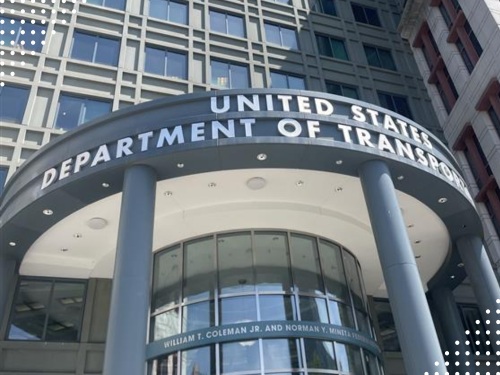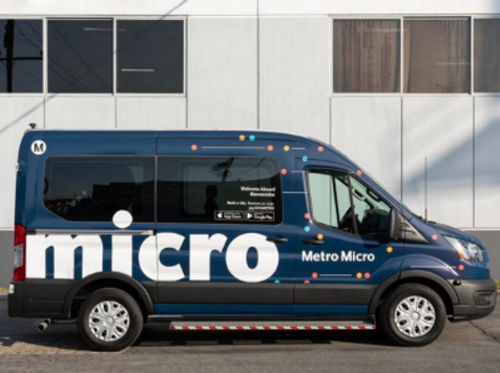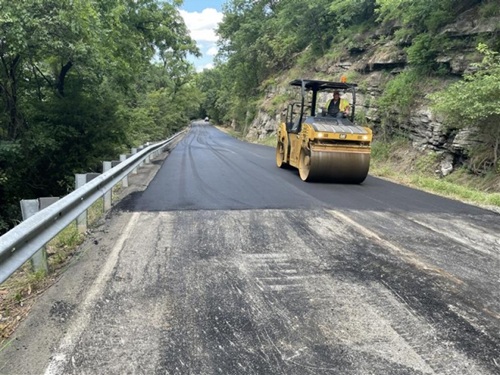A new report from the Mineta Transportation Institute found greater use of “microtransit” could help develop more wide-ranging and affordable on-demand transportation services and help build up ridership and expand geographic coverage for “traditional” public transit service as well.
[Above photo via the American Public Transportation Association]
For this study – entitled Steps to Supplement Park-and-Ride Public Transit Access with Ride-and-Ride Shuttles – MTI said “microtransit” refers specifically to the use of van-sized vehicles to access a greater number of residential neighborhoods and destinations more cost-effectively than is possible with fixed route bus service.
The report’s authors also examined the microtransit operation of Santa Clara Valley Transportation Authority to provide a “case study” of current practice.
That agency’s FLEX on-demand bus service – launched in January 2016 – showed that, by reducing operating costs and increasing more boardings per hour, general-purpose on-demand transit could cost-effectively replace fixed route bus service with low ridership.

Another example is the new RIDE program developed by the City of Wilson, N.C., in conjunction with the North Carolina Department of Transportation and Via.
Demand for RIDE has quickly outpaced that of the city’s fixed-route system, even with the challenges of the COVID-19 pandemic. Weekly ridership has now grown to 2,400 – compared to fixed-route ridership of around 1,450 per week pre-pandemic – and rider feedback has been “overwhelmingly positive,” with the service receiving an average rating of 4.8 out of 5 stars, NCDOT said.
“Microtransit provides a bridge to recovery when the [COVID-19] pandemic eases, even if the recovery takes several years,” MTI noted a statement regarding its report.
The study also highlighted several key microtransit attributes:
- Microtransit a viable strategy where fixed route productivity is below 15 boardings per hour.
- Implementation of microtransit service by transit agencies could substitute for fixed route bus service, or expansion of service where fixed routes are not likely to perform well.
- Microtransit can potentially meet the legal requirement for service to disabled passengers for whom walk-up access to fixed route bus service is impossible.
“Overall, microtransit should be managed with consideration of future conversion back to scheduled, fixed route alternatives if demand grows sufficiently to meet productivity and travel-time standards,” the report noted.
“Still, microtransit feeder services to mainline fixed route rail and high-usage bus trunk lines can continue to be useful to promote transportation equity today and in the coming post-pandemic years,” it said.
 Nation
Nation


